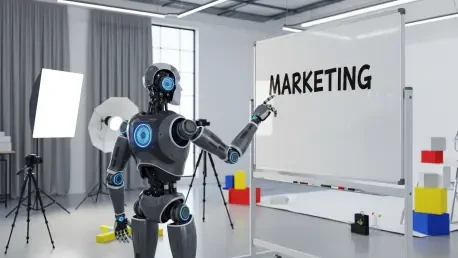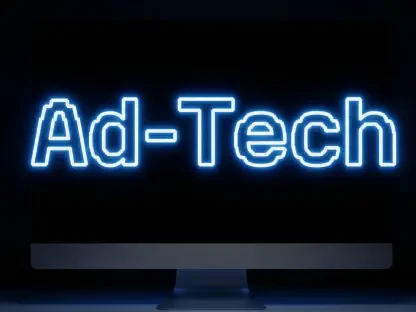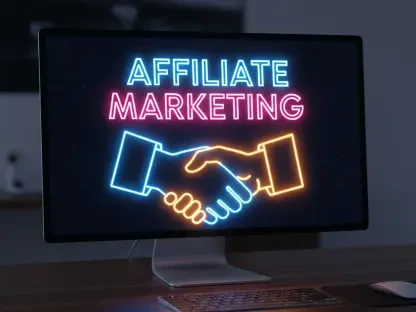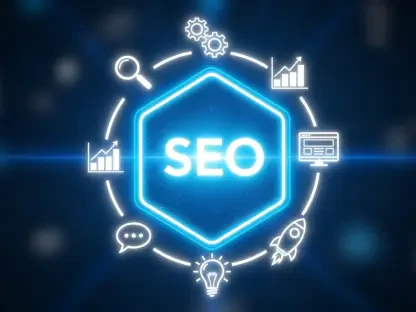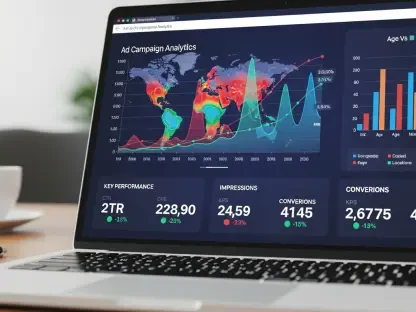In today’s fast-paced digital landscape, businesses face an unprecedented challenge: reaching and engaging audiences in a world saturated with information, where attention spans are shorter than ever, and competition for consumer attention is fiercer by the day. With over 80% of marketers adopting artificial intelligence (AI) tools to enhance their strategies, a seismic shift is underway in how brands connect with consumers. This transformation raises a critical question: how does AI marketing, with its data-driven precision and automation, stack up against traditional marketing, which has long relied on broad, emotional appeals through print and broadcast media? This comparison seeks to unravel the strengths, limitations, and ideal applications of both approaches, providing clarity for businesses navigating this evolving terrain.
Understanding AI Marketing and Traditional Marketing
AI marketing represents a revolutionary approach, leveraging machine learning, predictive analytics, and automation to optimize campaigns and personalize user experiences. Originating from advancements in data processing and computing power, this method focuses on harnessing vast datasets to predict consumer behavior and refine strategies in real time. Its fundamental principle lies in efficiency, using algorithms to automate tasks like ad placement and content generation, thereby minimizing human intervention and error. In the current business environment, AI marketing is indispensable for industries reliant on digital platforms, offering tools that drive precise targeting and measurable outcomes.
Traditional marketing, by contrast, traces its roots to the early days of advertising through newspapers, radio, and television, built on the principle of mass communication to build brand awareness. This approach prioritizes storytelling and emotional resonance, often using creative campaigns in physical or broadcast media to reach wide audiences. Despite the rise of digital channels, traditional marketing remains relevant for establishing trust and credibility, particularly in sectors where tangible, local presence matters. Its purpose is to create lasting impressions through consistent, broad messaging that appeals to collective sentiments.
The application of these strategies varies significantly across industries. AI marketing excels in mobile app promotion and customer engagement, transforming how businesses interact with users through customized notifications and data-driven insights. Traditional marketing, on the other hand, continues to play a vital role in building brand recognition via offline channels like billboards and TV commercials, often targeting demographics less active in digital spaces. Understanding these distinct applications provides a foundation for evaluating how each method addresses unique business needs in a competitive market.
Key Differences in Marketing Approaches
Automation and Efficiency
One of the most striking contrasts between AI marketing and traditional marketing lies in the level of automation each employs. AI marketing streamlines repetitive tasks such as campaign optimization, content creation, and performance tracking through sophisticated algorithms. This automation allows for real-time adjustments, ensuring campaigns remain effective without constant manual oversight. For example, automated ad bidding on digital platforms can dynamically adjust budgets based on performance, maximizing impact with minimal effort.
Traditional marketing, however, often depends on manual processes that require significant time and human input. From designing print advertisements to negotiating media placements, each step involves meticulous planning and coordination, which can delay execution. A clear illustration is the difference between manual media buying for a TV slot, which might take weeks to finalize, and AI-driven programmatic advertising that operates in milliseconds. This gap in efficiency highlights a fundamental disparity in how quickly each approach can adapt to market changes.
The impact of automation on error reduction further sets AI apart. By minimizing human involvement in routine decisions, AI reduces the likelihood of missteps in targeting or budget allocation. Traditional methods, lacking such precision, may result in wasted resources due to slower feedback loops. Businesses prioritizing speed and accuracy often find AI’s automated systems a compelling advantage in maintaining a competitive edge.
Personalization and Audience Targeting
When it comes to tailoring content to individual preferences, AI marketing holds a distinct edge over its traditional counterpart. Through machine learning and predictive analytics, AI can analyze vast amounts of data to deliver highly personalized experiences, such as customized app notifications or product recommendations based on browsing history. This capability ensures messages resonate with specific users, enhancing engagement and conversion rates in digital campaigns.
Traditional marketing, in contrast, typically adopts a broader, less targeted approach, aiming to appeal to a general audience through mass media like newspapers or television ads. While effective for building widespread awareness, this method often lacks the granularity to address individual needs or behaviors. A classic TV commercial, for instance, cannot adjust its message based on who is watching, unlike an AI-driven social media ad that adapts to user demographics in real time.
This difference in targeting precision underscores a shift in consumer expectations. Modern audiences increasingly demand relevance in communications, a need AI meets by leveraging data insights for micro-targeting. Traditional marketing, though impactful for universal messaging, struggles to match this level of customization, often resulting in lower engagement in niche or digital-heavy markets. The ability to connect on a personal level thus becomes a defining factor in campaign success.
Cost Efficiency and Return on Investment (ROI)
Financial considerations play a pivotal role in choosing between AI and traditional marketing, with each presenting unique cost structures. AI marketing often involves higher upfront costs due to investments in technology, software, and expertise needed to implement data-driven systems. However, over time, these costs are offset by savings from optimized budget allocation and improved ROI, as campaigns are fine-tuned automatically to maximize impact. Industry projections estimate the AI marketing tools market will grow significantly from 2025 to 2027, reflecting its long-term value.
Traditional marketing, conversely, frequently incurs ongoing expenses tied to the production and distribution of physical media, such as printing flyers or airing TV spots. These costs can accumulate without guaranteed returns, especially when measuring impact proves challenging. Unlike AI’s ability to track digital interactions with precision, traditional methods often rely on estimates or surveys, making it harder to justify expenditures in a results-driven era.
The potential for higher ROI with AI stems from its capacity to reduce waste and focus resources on high-performing channels. Businesses adopting AI tools can expect to see campaigns refined continuously, ensuring funds are directed toward effective strategies. Traditional marketing, while powerful for brand-building, may drain budgets without delivering comparable measurable gains, positioning AI as a more cost-effective choice for data-savvy enterprises.
Challenges and Limitations of Each Approach
AI marketing, despite its advantages, comes with notable hurdles that businesses must navigate. The initial investment in technology and the need for technical expertise can be prohibitive, especially for smaller firms lacking resources to integrate complex systems. Additionally, data privacy concerns loom large, as consumers grow wary of how their information is used for targeting, raising ethical questions about transparency and consent in AI-driven campaigns.
Traditional marketing faces its own set of challenges, particularly in a digital-first world where adaptability is key. Measuring the impact of offline campaigns remains difficult, with tools like surveys offering only approximate insights compared to digital analytics. Furthermore, the lack of real-time flexibility means traditional methods cannot pivot quickly in response to market shifts, often resulting in outdated messaging that fails to capture evolving consumer interests.
Ethical considerations also differ between the two approaches. AI’s potential for invasive targeting risks alienating users if perceived as intrusive, necessitating careful balance in personalization efforts. Traditional marketing, while less intrusive, struggles to maintain relevance as audience behaviors shift toward online platforms, requiring constant reinvention to avoid obsolescence. Both methods demand strategic foresight to address these limitations effectively.
Conclusion: Choosing the Right Strategy for Your Goals
Looking back, the comparison between AI marketing and traditional marketing revealed stark contrasts in efficiency, personalization, and financial outcomes. AI stood out for its prowess in automation and data-driven precision, offering businesses unparalleled insights and adaptability, particularly in digital realms like mobile app promotion. Traditional marketing, however, held its ground as a trusted avenue for broad brand exposure and emotional storytelling, resonating deeply in markets valuing physical presence.
Moving forward, businesses should consider hybrid strategies as a practical next step, blending AI’s analytical strengths with traditional marketing’s human touch to craft campaigns that are both targeted and universally appealing. For tech-focused initiatives, investing in AI tools to drive personalization and optimize budgets is a clear priority. Meanwhile, for local or trust-building efforts, allocating resources to traditional channels can solidify brand identity. By experimenting with integrated approaches and continuously evaluating performance metrics, companies can navigate the dynamic marketing landscape with confidence, ensuring they remain agile and relevant in an ever-changing environment.
